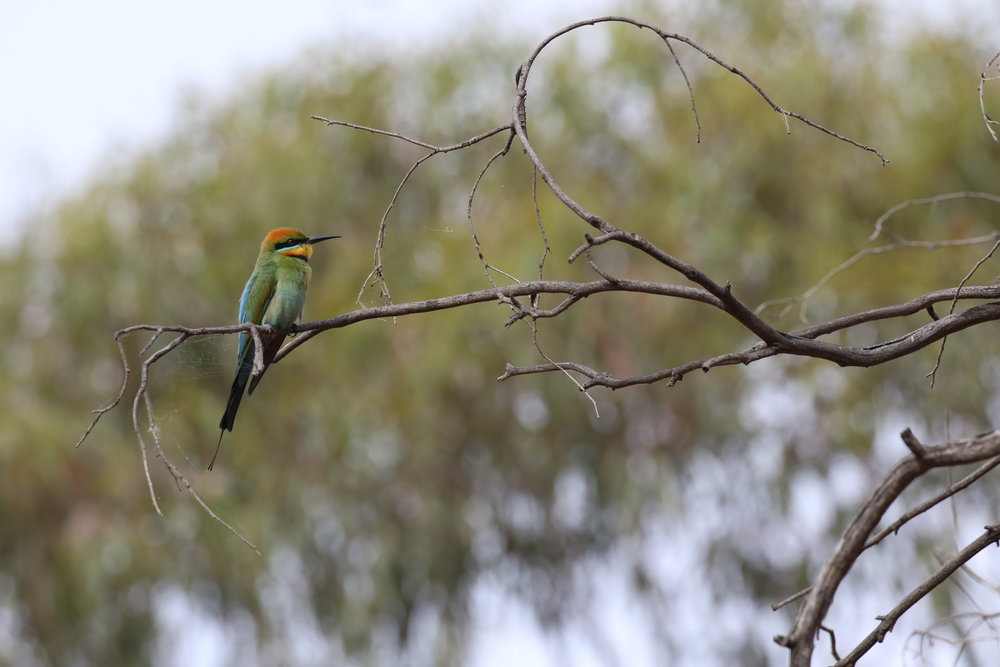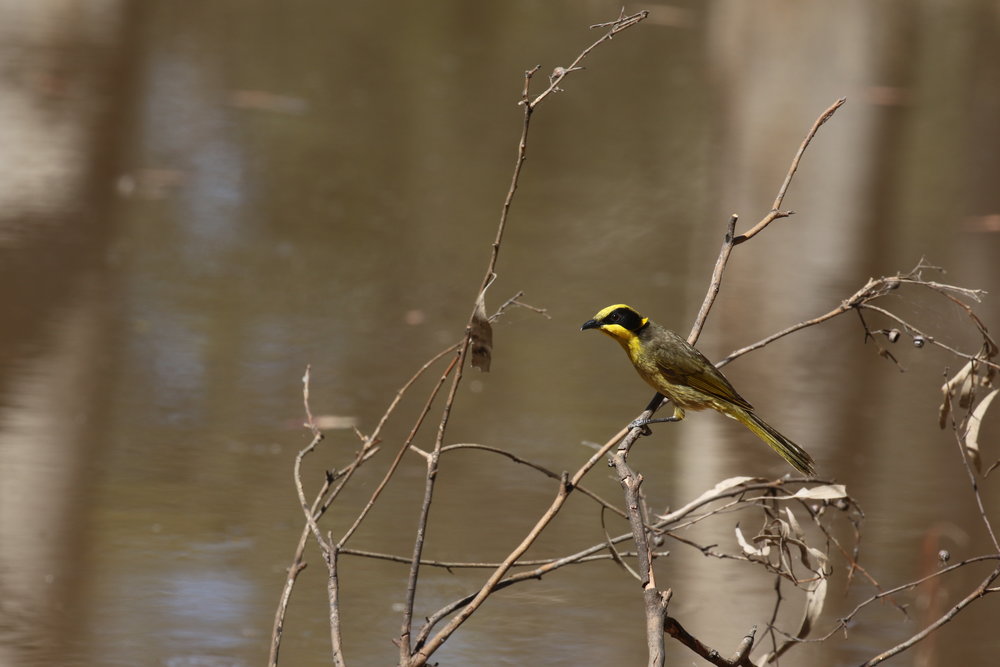We often hear the phrase “head south for the winter” in popular culture. Hollywood films abound with references to spending in winter in sunny California or Florida, but in a global context, Australia is relatively south. Here in Victoria, we’re pretty far south in an Australian context. So much so that most of our migratory birds head north for the winter! For example, dollarbirds and rainbow bee-eaters move up the east coast to Queensland or even further still to New Guinea. You may have become aware of the vast northerly migration of many of our shorebirds through the Wing Threads project. Wing Threads is inspired by species that depart Australia and fly the entire length of the Australasian-East Asian Flyway to reach their breeding grounds in places such as northern China and Siberia. These species spend life in perpetual summer. But while some species depart at the onset of the Victorian winter, there are a diversity of other movement strategies that see some species arriving in Victoria just as our weather begins to get cold.

Unlike the trans-equatorial, south-to-north migrations undertaken by many of its shorebird relatives, the double-banded plover arrives on Victorian shores in autumn after crossing the Tasman Sea from New Zealand. As well as changing the nation in which it resides, the double-banded plover also undergoes something of a habitat change as well. In New Zealand, it can be found among the shingle rocks lining the banks of rivers of the South Island. When it arrives in Australia, the double-banded plover’s favoured habitat is tidal mudflats and adjacent salt marsh. Here, it can be found in small groups and often forages in close proximity to our resident red-capped plover. Shorebirds, such as the double-banded plover and red-capped plover, often prove challenging to identify. However, if you can see two smudgey, brown bars extending from each of the bird’s ‘shoulders’ onto the top of the breast, you are looking at a double-banded plover. This is how they get their name, although the bars are much more striking when the birds are in breeding plumage (which you are very unlikely to see at this time of year). Another useful feature to assist with identification of double-banded plovers is the distinctly buffy appearance of their face.
 Keep a look out on Victoria’s shores this winter. Amongst the resident red-capped plovers, you might be able to spot a slightly larger double-banded plover as it spends the winter here after breeding in New Zealand during the summer.
Keep a look out on Victoria’s shores this winter. Amongst the resident red-capped plovers, you might be able to spot a slightly larger double-banded plover as it spends the winter here after breeding in New Zealand during the summer.
Most migratory species move because conditions in their breeding range become unsuitable to sustain foraging activity. For birds that inhabit alpine areas during the summer months, it is not hard to see that the start of the snow season may limit opportunities for foraging, particularly for species that catch insects from the ground. The flame robin can be found across most of Victoria, but in winter the task of finding one near Melbourne becomes decidedly easier. This is because many individuals that spend the summer in the high country move to lower elevations, including open habitats close to Melbourne, where conditions are more favourable for foraging. Look for them sitting on farm fences, or in open grassy woodlands. The red-orange breast of a male flame robin is sure to provide some visual warmth to your day. Similar to the movements of flame robins, you may have noticed more pied currawongs in the Melbourne suburbs now that we are heading towards winter. These intelligent birds eat insects, fruit and small vertebrates. Despite this varied diet, the fact that some pied currawongs disperse from upland areas to lower elevations highlights how challenging it can be to find enough food in the high country when everything has become dormant for the winter, even for incredibly smart and resourceful birds.
 Sitting in a dead branch of a Snow Gum atop Falls Creek during summer, this female flame robin may have migrated to lower elevation to spend the winter in more favourable conditions.
Sitting in a dead branch of a Snow Gum atop Falls Creek during summer, this female flame robin may have migrated to lower elevation to spend the winter in more favourable conditions.
We may think that the weather in Melbourne is cold at this time of the year. Yet, in relation to the chill felt in Tasmania, we have a relatively mild winter. This means that some species of birds migrate from Tasmania to Victoria at this time of year to take advantage of our environmental conditions and food resources. The Critically Endangered orange-bellied parrot and swift parrot undertake the crossing of Bass Strait during autumn, but these headline grabbers are not alone. Many blue-winged parrots (very closely related to orange-bellied parrots) also migrate to Victoria and further north for the winter. Similarly, tiny silvereyes and striated pardalotes also make the flight across from Tasmania to augment the number of individuals that are present in Victoria. Over the cooler months around Melbourne, silvereyes from Tasmania can be identified by their brown flanks, whereas those that are here year-round lack this strong colouration, having off-white or pale buff flanks. In the case of the striated pardalote, Tasmanian birds have a yellow spot at the crook of their wing (the carpal joint), whereas in Victorian birds this spot will be red.
Many of the dominant eucalypt trees that characterise the open forests of central and northern Victoria flower in winter. This means that these regions may be descended upon by many species of nectar feeding birds, particularly honeyeaters and lorikeets, during winter. These birds are referred to as blossom nomads because they move across the landscape with no fixed pattern; where they occur is influenced strongly by where the most nectar is available at any point in time. By flowering in winter when insect activity is typically inhibited by the cold conditions, winter-flowering eucalypts rely on the service nectarivorous birds provide in the form of pollen transport. Through visiting multiple flowers to drink nectar, nectarivorous birds are inadvertently dusted with pollen which they then transfer to subsequent flowers they visit, thus facilitating successful fertilization of the flowers. It is because of this benefit that the trees produce the nectar reward that proves so irresistible to the diverse suite of blossom nomads that are drawn from across the landscape.

Whereas most migratory birds leave Victoria as the weather starts to become chilly in the lead up to winter, don’t let this stop you from grabbing your binoculars and heading out for some quality birding time. If you don’t brave the conditions during this colder part of the year, you may never get the chance to see some species, such as the double-banded plover, which can be found in Victoria only at this time of year. You may also be rewarded with the sight of a eucalypt forest in full bloom and a cacophony of bird song to make it all worthwhile.

Rowan Mott
Rowan is a PhD student studying seabird ecology. When he’s not thinking about the ocean, he likes to think about woodland birds.
You can find him on Twitter at @roamingmoth

Leave a Reply